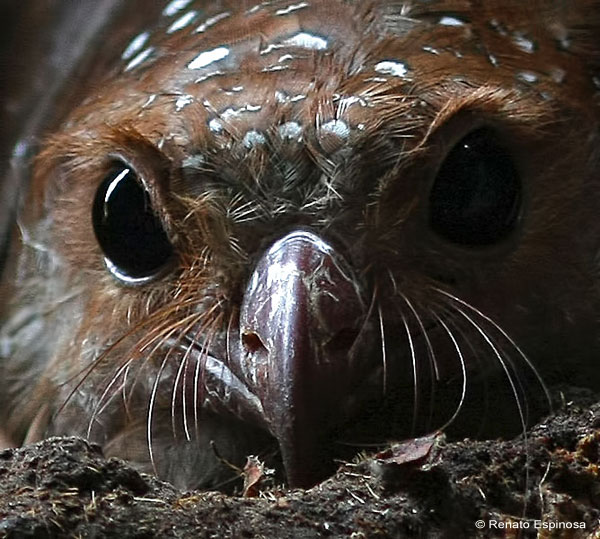OILBIRDS IN ECUADOR
These mysterious birds are nocturnal and use sounds to navigate in pitch dark much like bats do with their ultrasonic sound radar. Their navigating sound is a loud metallic click which is detected and interpreted by echolocation. Their navigation system is very accurate and allows these large birds to return to their caves without colliding or crashing into their nest. Here is link to a detail study to their vocalization:
https://www.ncbi.nlm.nih.gov/pmc/articles/PMC5451837/
Their eyes have also been found to be very sensitive lo light and their structure is similar to the deep-sea fish. Their sensitivity is the highest ever recorded in any eye of a vertebrate. Here is a link to the article
https://pubmed.ncbi.nlm.nih.gov/14740100/
Get the full article in pdf here:
http://www.biosciences-labs.bham.ac.uk/martin/PDFs/OilbirdNaturwissenschaften.PDF
Their main diet near Cueva de los Tayos in Chontal is palm oil fruit, their seeds are found near their nest, presumably from feeding their chick. They are frugivore so their digestive system is highly specialized to obtain all the required nutrients form the fruit they eat. The young are fed great quantities of oil reaching weights that are twice of that of their parents. In the past the young birds were hunted and boiled for their oil which was used as cooking oil or lamp oil. The diet of the Oilbirds were studied in Venezuela from here is a link to the full article: The Diet of the Oilbird in Venezuela by: Carlos Bosque, Rudyard Ramrez & Domingo Rodrguez
http://www.ibiologia.unam.mx/pdf/links/neo/rev6/vol6_2/ornitol_6_2_67-80.pdf
On a recent visit, when we approached some of them took flight and made terrible sounds and clicks while they approached other birds in search of a spot to cling to the walls. They displayed great flying abilities and were able to fly slowly and hover in mid air as they search for an adequate perch. The great flight capabilities, and the large curved bill, allows them pluck the fruit in flight. The oilbirds have never been observed perched in the forest and have a typical feeding range from 40 km up to 150 km. These superior flying angels are great contributors to the ecosystem since they spread seeds (seed dispersal) far away from the production areas diversifying plant life and securing their survival.
Here is a great article where the bird movements have been studied in great detail with the aid of GPS technology:
http://www.plosone.org/article/info%3Adoi%2F10.1371%2Fjournal.pone.0008264
